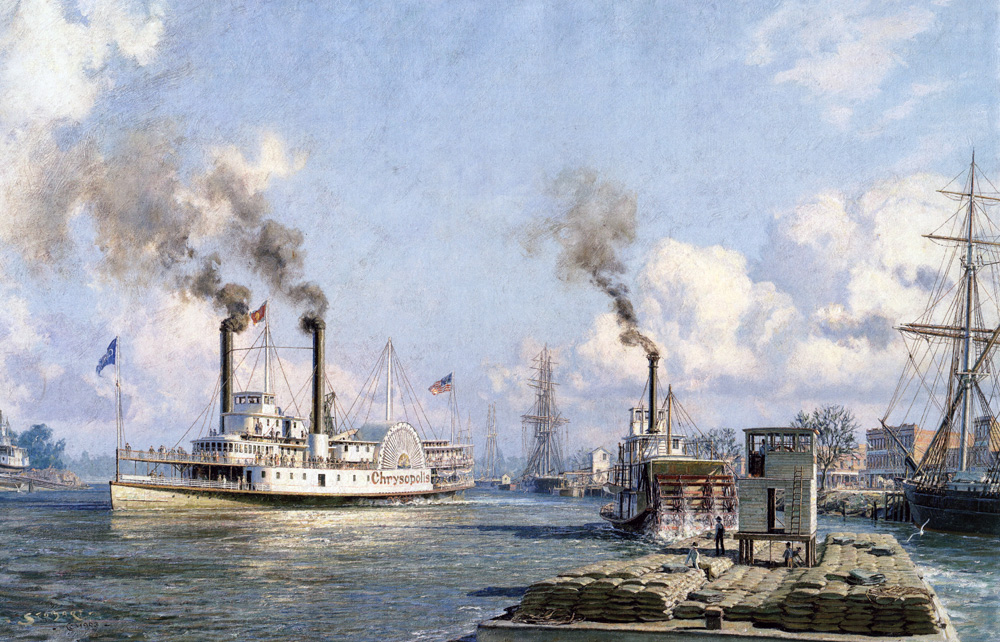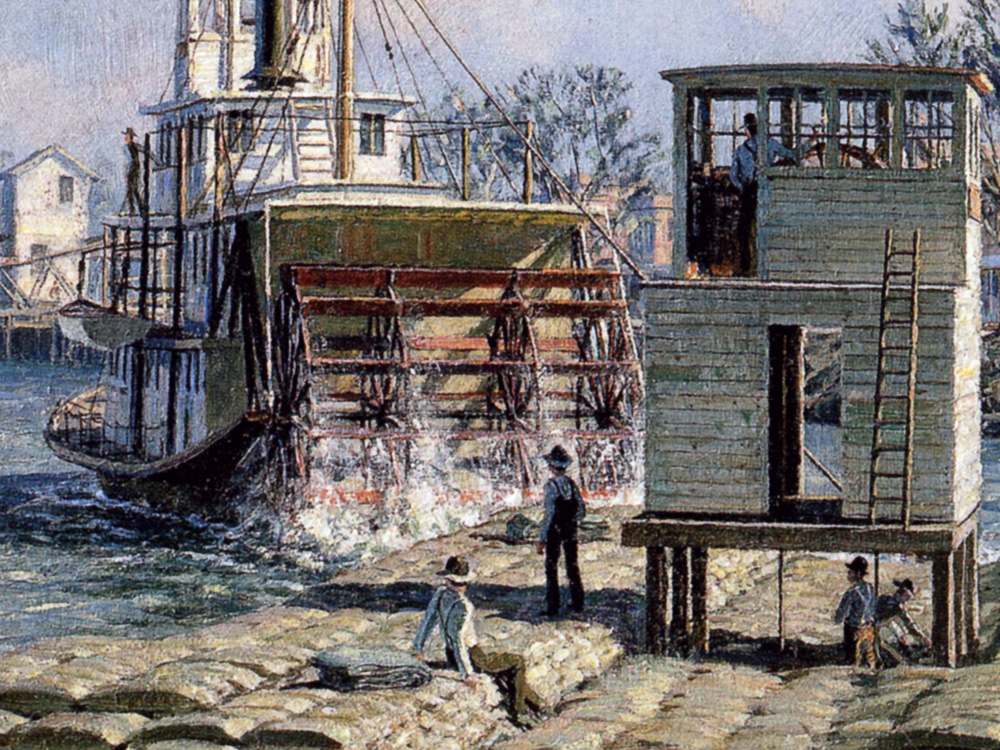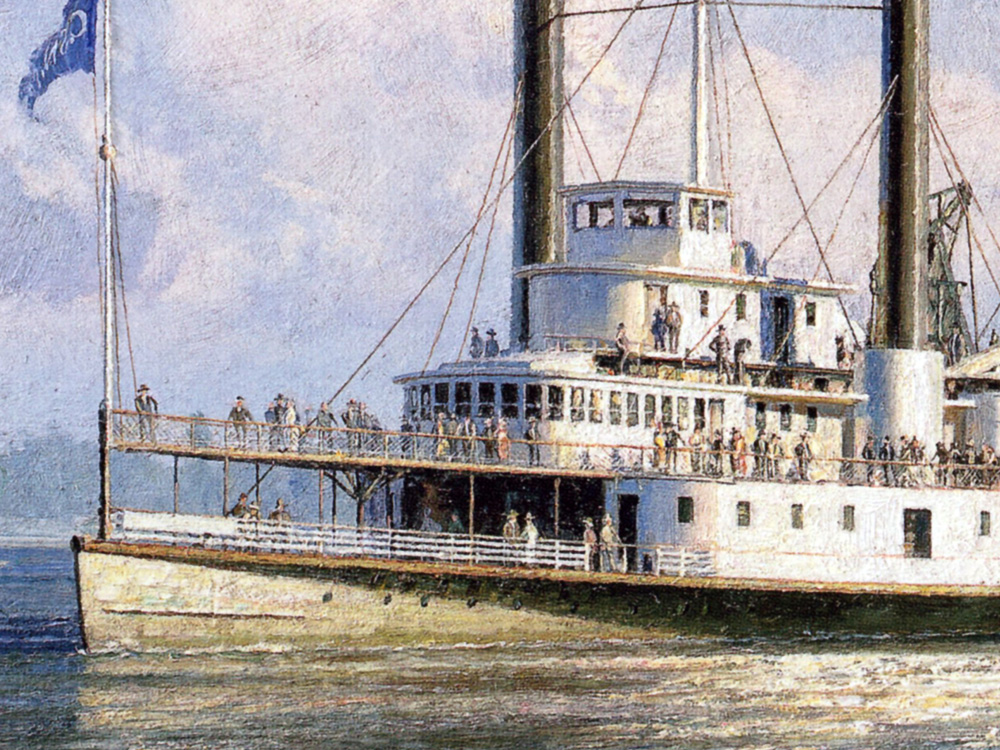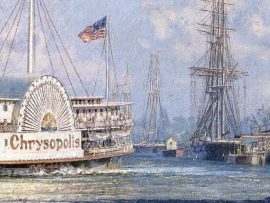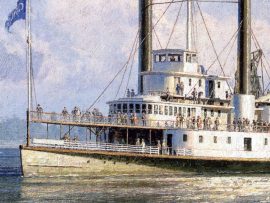Sacramento: The Celebrated River Steamer “Chrysopolis” Leaving for San Francisco
$600.00
Though populated by the Maidus Indians at the time of the first known accounts of the history of Alta California, the names Cortez and Cabrillo were the major kingpins of its discovery until the arrival on the scene of John Augustus Sutter in 1839.
Having acquired permission, from governor Alvarado in Monterey, to establish, on new land, an “empire of civilization,” he sailed that year with a small group in three ships for “the delta and thence north”. Alvarado had agreed to Sutter’s commanding eleven Spanish leagues (76 square miles) of “any unoccupied land that suited him best.”
In simple terms Sutter seems to have been quite an unusual fellow to say the least, and how he gained an initial foothold in a region of hostile hordes with a mere handful of men defies imagination. He carefully picked a secure location below the confluence of the American and Sacramento rivers as his desired place of settlement and proceeded to build a fort with local materials. This heralded the beginning of development of the vast interior of this abundantly rich valley.
The painting shows Sacramento in 1870. The town had already burgeoned into what is now Old Sacramento in only thirty years, and this reaches some eight blocks in from the riverfront! The California Steam Navigation Company’s celebrated paddiewhealer “Chrysopolis” turns in midstream to begin her seven hour passage to San Francisco, her passengers enjoying the sights of the riverfront and the early morning sunshine. To the right a working towboat maneuvers a barge with its own wheelhouse and laden with sacks of farm produce to an upstream wharf while square riggers and schooners (having navigated the river under sail) rest at their berths. The road along the distant right hand riverbank was given and still keeps to this day the name “Jib-boom” Road. You will notice that the “Chrysopolis” displays a somewhat unusual design in that her stacks are virtually at her sides. Many, steamboats of the period, in pushing their boilers to the limit to gain advantage over other boats were to explode and sink. In the case of the “Chrysopolis” however, it was thought that if the boilers were placed on the overhang, should they ever blow up the vessel’s hull might not be irreparably damaged. In any event, this proud vessel was to remain in service (the last sixty five years rebuilt as a ferry under the name “Oakland”) for a total of eighty years.
| Weight | 6.00 lbs |
|---|---|
| Catalog: | Stobart-135 |
| Artist: | John Stobart |
| Dimensions: | 19 1/2" x 31" |
| Edition: | 750 |

